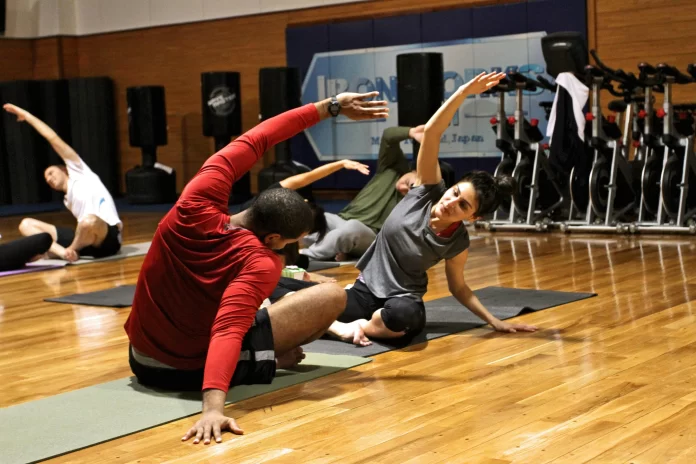The new year can bring with it a list of resolutions, among the most popular being a promise to start exercising. It’s no secret that working out is vital for staying healthy, but where do we start? What kinds of exercises should we focus on, and what’s the difference between exercise and physical activity?
To get an idea of how beginners can stay fit, The Cascade sat down with Leslie Horita, a kinesiology professor at both UFV and Langara College. Horita explained that not only does staying fit make you look healthier, but it can also improve your mood and even help your mental performance.
Hitting the gym as often as you can might be what you first think will get you into the best condition, but hold your horses. While cardio and lifting weights are both important, beginners should focus on finding workouts that can realistically be incorporated into their daily routines. Horita says it’s best to start with something like going for a walk, or doing another form of physical activity that suits your lifestyle.
“If someone is told, ‘Well, you have to do this. You have to go into a gym,’ but they hate being in a gym, [then] they’re not going to want to do [the] activity,” she said. “Finding [an] activity and group of people that [you] enjoy being with… that’s where you start.”
Find some fun things to do with your friends, like throwing a frisbee around at the park, or going for a hike so you can post the view online. Try to keep up with your dog on a run, or join a Zumba class. Having a multitude of activities to shift between allows for fewer deterrents from working out, like changing seasons, bad weather, and other life situations.
Even if you’re not specifically exercising, it’s important to be physically active every day. Things like walking around your house while talking on the phone, stretching while doing laundry, and even parking a little bit further away from the grocery store entrance are all good to get in the habit of doing.
“It doesn’t need to be a specific, dedicated period of time,” said Horita. “It can be as simple as, ‘I don’t have time to do the activity I really like to do, but instead, I’m going to make sure I take the stairs all day … instead of the elevator.’”
If you ***are* setting time aside to exercise, Horita recommends roughly three to five days per week for cardio. As for strength training, two to three days a week is the standard.
Once you’re at the gym, don’t forget to start with a five to 10 minute warm up. Next, try to work out as many muscles as you can with eight to 10 different exercises. Two to three sets of each exercise should take you about an hour, but really, you can stay as little or as long as you’d like. (Although you might get kicked out once the gym closes).
“The real win in that situation is just getting in the habit of showing up.”
While any gym buff knows to never skip leg day, it turns out you can if you’re a beginner. Individually scheduling your leg, chest, and arm workouts is called a split routine, which is geared toward people who go to the gym five to six days a week.
Horita recommends beginners stick to a whole body workout, since participating in a split routine as a beginner could lead to only a few muscles being worked on in the span of a week. It would be great if everyone could find the time to go to the gym two or three days a week, but beginners are more likely to go once or twice a week. That means you want some full body workouts while you’re at the gym.
Looking to deliver on that New Year’s resolution? Start by incorporating some physical activity into your daily life. Otherwise, Horita suggests registering for KIN 103, Concepts of Physical Fitness, as an elective if you’re interested in learning more about how to stay fit.
“We cover nutrition, different types of exercise, [and] basic principles of training. [Students] would learn how to set up a basic health and fitness program for themselves.”


